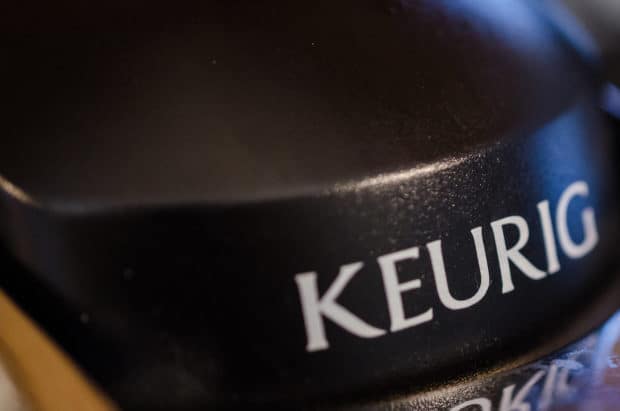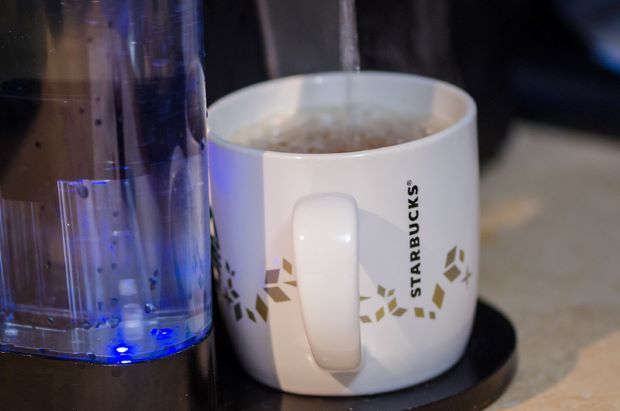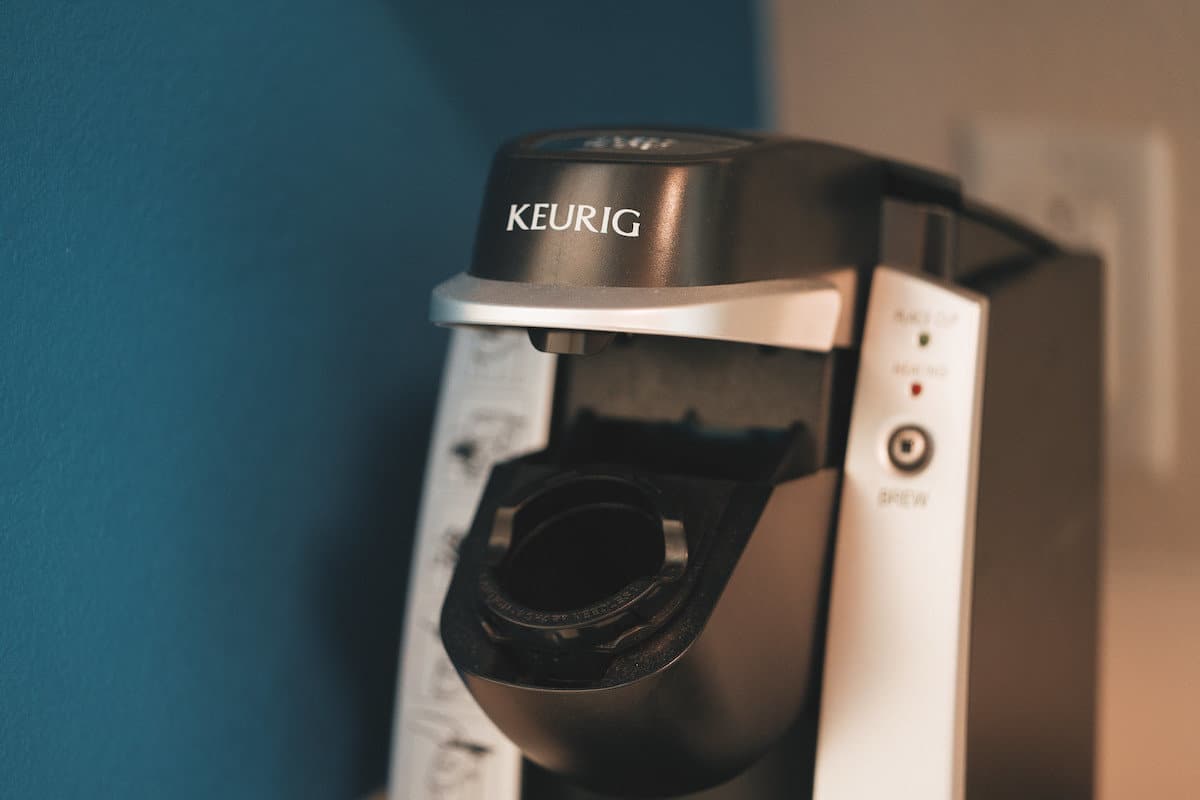Last Updated on December 6, 2023
For many people, fresh coffee is an essential part of their morning routine. One of the easiest ways to make cups of coffee is to use an automated machine like a Keurig. This device is undoubtedly convenient and practical, but it does occasionally have problems.
As with all complex equipment, there are many different reasons why a Keurig might not work. This article will focus on what happens when your Keurig stops pumping water.
Simple and straightforward fixes can often get your Keurig up and running in no time. Get your mugs ready, and let’s dive in.

Reasons Why a Keurig Coffee Machine Won’t Pump Water
The process for getting hot water for coffee is pretty simple. First, you put water into the reservoir tank. When brewing, the machine extracts the water, heats it, and pours it through your K-Cup to deliver virtually instant brews.
That said, while the process is pretty straightforward, many individual steps are involved. So the best way to troubleshoot a Keurig that won’t pump is to look at each component piece by piece and determine if it’s the culprit. In some extreme cases, there may be multiple issues, so it’s best to run through them all to be safe.
With that in mind, let’s work through these steps and see what potential problems could prevent your Keurig from pumping water.

Problem: A Clogged Water Tank (Hard Water)
There’s a couple of common reasons why the water tank might get clogged. In most cases, the cause is hard water that contains various minerals. Over time, these minerals collect at the opening. The mineral buildup may then prevent water from escaping. This setup is much like what happens to one’s arteries after years of collecting plaque from fatty foods.
In this situation, you’ll likely notice the water pump doesn’t deliver as much water, until the entire thing stops working altogether. The water coming out might be a trickle for a few uses, then it’ll turn into a few drops.
Solution: Descaling Solution
If you were to ask Keurig why your coffee brewer isn’t pumping water, they would recommend a descaling solution. You can find some cleaning products online, and it’s often best to compare prices to save a little money. Usually, you have to soak the reservoir in this solution, then run it through the entire Keurig to clean it out.
Can This Problem Be Prevented?
Yes, you can prevent scale buildup by using filtered water in your coffee machine. You can also descale your device regularly, such as once a month or every other month. Doing this removes scale before it clogs the machinery, saving you a lot of hassle later.
Problem: Rusted Reservoir Spring
If you turn your water tank over, you’ll notice a valve with a spring wrapped around it. This valve allows the water to flow from the water reservoir into the device and into your mug. Since this piece gets wet, it can attract bacteria and mold. If you haven’t cleaned this spring yet, it may not work correctly from rusting or wear.
Even if the spring isn’t the problem this time, it might be an issue down the road. So it’s good to know where it is so you can occasionally inspect it.
Solution: Clean the Spring
If the spring doesn’t work correctly because of corrosion or blockages, you can simply get a new one. However, it’s much easier to clean your existing spring. We recommend doing this at least twice a month.
Can This Problem Be Prevented?
As with most Keurig troubleshooting, routine maintenance and cleaning will come in handy. Check the spring regularly and clean it as needed.
Problem: Air in the Lines
Air bubbles can clog your Keurig coffee maker as easily as anything else. It all has to do with water pressure and the fact that a bubble can lessen your pressure significantly. Usually, air gets inside the Keurig because the reservoir ran out of water and started sucking air.
Solution: Remove the Air Bubbles
You can knock your Keurig a few times after removing the water tank to get any air out of the system. If that doesn’t work, you can simply run the machine with water only and let it flush the air out itself. The latter option is more reliable. You can run a water-only cycle a few times until you’re sure the job is done.
Can This Problem Be Prevented?
Yes, you should pay attention to your water tank whenever brewing coffee. If the water reservoir runs dry, you should turn it off and refill the tank immediately. The longer your Keurig runs without water in the lines, the more damaged it gets and the harder it is to fix.
Problem: Clogged Needles
When you’re using a Keurig, hot water passes through the K-Cup thanks to two sharp needles that puncture it on the top and bottom. Unfortunately, coffee grounds can get stuck in these needle holes, preventing proper water flow.
Solution: Clean the Needles
To clean a Keurig entrance needle, insert a straightened metal paper clip into the needle and gently move the paper clip around to loosen and remove any particles.
This video demonstrates the paper clip method:
Can This Problem Be Prevented?
Clogged needles are fairly common, and you can’t really prevent it. Just be aware of when they might be clogged and take steps to clear them.
Problem: Faulty Detection Magnet
Have you ever wondered how your Keurig knows there’s water inside the reservoir? Well, it turns out that the whole system is full of sensors. Unfortunately, over time, the magnet that allows the machine to detect the water level in the reservoir can become stuck or misaligned, causing the coffee maker to not pump water.
Solution: Empty and Refill the Tank
To test your sensor, you should remove all the water from the reservoir and fill it back up about a third of the way. If the sensor is still tripping, try tapping the tank next to where the magnet is located, or gently shake it. If that doesn’t help, you can reach into the water reservoir (make sure you empty it first) and use your finger to adjust the magnet.
Can This Problem Be Prevented?
The only way to fully prevent this problem is to inspect the sensor regularly. Also, you must decide if you’ll always keep water inside the water tank (not recommended) or empty it after each use. If you keep water in the machine, be sure it’s not below the fill line. Doing this can keep the sensor working more accurately over time.
The Bottom Line: Take Care of Your Keurig
Typically, the best defence is an excellent offence. If you take care of your coffee maker and clean it regularly, you shouldn’t have to worry about clogs and other blockages that can keep it from dispensing fresh water.
Thinking of getting a Nespresso to replace or complement your Keurig? See our comparison of Nespresso and Keurig.
And if you’re tired of using coffee pods, see our roundup of the best single serve coffee makers without pods.
Thumbnail image: © Tony Webster | Creative Commons


